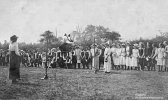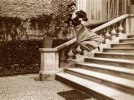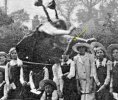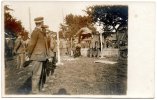My personal view of this has been for quite some time now is to get the concept of historical fact out of (my) your head.
Irrespective of if it’s a journal, document, photograph, personal memory or oral story, it just how some individuals saw the world at the time, and how they wanted to tell that story.
We all experience events and the world differently. You only have to listen to people talking about last night’s football match, political opinion, or religion etc to hear this.
I often hear people bickering about the past as they have allegedly research it, clinging on tightly to their source or reference material, their rare and well-thumbed documents. All they are doing is building a body of knowledge and quoting so called historical fact verbatim as a way of separating themselves from the other. Attempting to close the discussion down like this is adding nothing to their understanding of the past.
The past should be understandable by everyone, not just a few academics or historians.
If we can then all, academics, historians and everyday people take part in the discussion of the way things were and how we lived, that to me would be a real triumph of human reason and learning.












